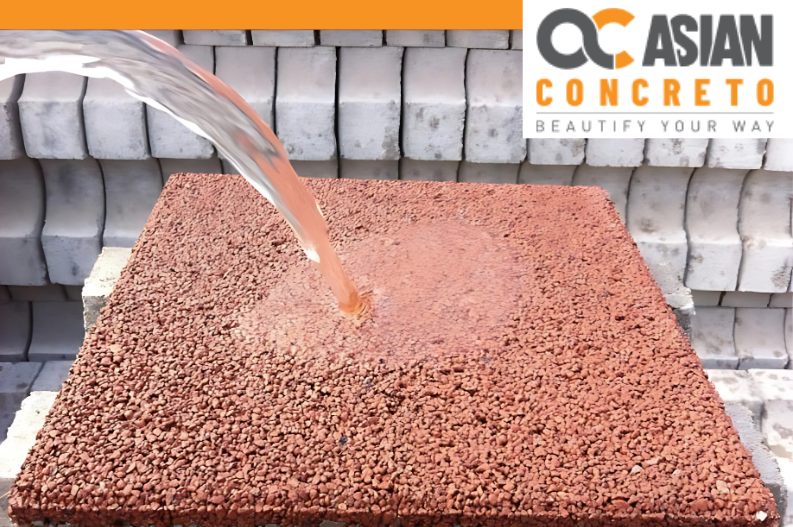
Permeable Paving: A Sustainable Solution to Kathmandu Valley’s Flooding Issues
Kathmandu Valley is currently exposed to an ever-increasing risk of urban flooding due to a fast rate of urbanization, poor drainage, and highly concrete ways. This will further increase the severity of the floods during intense rainfall, which often results in massive water-logging disruptions to both infrastructure and people’s lives.
In September 2024, 240 mm of rain fell in an already disoriented valley, hence flooding and landslides. This cut off roads, bridges, and communication utilities of transporting routes and undermined significant infrastructure. That is under construction now, along with roads and utility services, with the communication network. The groundwater depletion every year further breaks down by 2.5 meters of the annual table, at six times more than the extraction rates of its natural recharge.
Permeable products have turned out to be one of the eco-friendly ways that deal with the perennial urban flooding and drainage problems in the Kathmandu Valley. In the same breath, the rainwater infiltrates the ground, leading to reduced surface runoff and replenishing the ground levels. This reduces pressure on drainage systems, which may cause flooding by not having water stagnate.
Other benefits of permeable products are better stormwater management, pollutants filtered out before entering a water body, minimization of the effect of UHIs on urban environments because they absorb less heat than traditional surfaces—and protection from erosion for infrastructure stability. This solution doesn’t only address flooding concerns but also supports natural water cycles toward long-term sustainability.
Permeable Paving Products: Types, Features, and Applications
Permeable paving solutions are generally available as permeable pavers and tiles, which are efficient in water absorption without sacrificing structural integrity and durability. Such materials help with stormwater runoff, which in turn reduces the risk of flooding through the recharging of groundwater. It also provides an environmentally friendly alternative to conventional paving solutions.
Types of Permeable Paving Products
- Permeable Pavers: Interlocking pavers with some openings, or porous material designed to allow water infiltration; usually installed in residential driveways, urban access ways for pedestrian zones, and commercial parking lots. The pavers reduce surface runoff and increase water infiltration, assisting in the appropriate management of stormwater at source by forming an ecologically viable solution to conventional paving materials.
- Permeable Tiles: These specially designed tiles for walkways, courtyards, and landscaped paths are high in permeability. The tiles enable water to percolate through them, thus enhancing drainage and eliminating ponding of water, while at the same time maintaining the aesthetic view and longevity of the outdoors.
Key Features
- Efficient Stormwater Management: Reduces waterlogging and surface flooding, and it decreases the strain heavy rainfall puts on drainage systems.
- Eco-friendly & Sustainable: It’s going to enhance the recharge of groundwater, lower urban heat, and ensure environmental sustainability by reducing runoff.
- High Durability: Withstanding high traffic, extreme weather, and heavy use conditions to yield long-lasting performance.
- Aesthetic & Functional: It comes in different patterns and colors to aesthetically suit any urban landscape, while its performance remains at maximum functionality.
- Low Maintenance & Economical: This will cut down your other long-term expenses on repairs of the drainage system and provide a durable but pocket-friendly solution to your needs with very low maintenance.
Applications & Use Cases
- Urban Roads & Parking Lots: Permeable paving is a very good method to completely slash runoffs and prevent flooding. This makes it ideal for urban roads and parking lots in areas that face heavy traffic and waterlogging during rainfall, such as New Baneshwor and Thapathali.
- Footpaths & Pedestrian Zones: Permeable paving provides slip resistance to the footpaths and pedestrian zones of areas like New Road, Durbar Marg, and Patan under high traffic. They become safe as they improve aesthetic appearance and are efficient with drainage.
- Near Rivers and Wetlands: Permeable paving is perfect for use near natural watercourses, for example, to prevent erosion on the banks of the Bagmati River in places like Patan or on a lake shoreline, while improving its water absorption in sensitive areas.
- Public Parks & Green Spaces: The permeable pavers are ideal for parks like the Garden of Dreams and the Sundhara Park because they will encourage better infiltration of water into the ground, hence reducing waterlogging and saving green space.
- Residential & Commercial Developments: Such pavers offer an eco-friendly alternative for conscious homeowners and businesses in places like Boudhanath Stupa and Lazimpat to use in stormwater management and beauty value enhancement.
- Temple Premises & Heritage Sites: The tiles will enable the water to pass through and drain, but prevent it from reaching the backside. This is called maintaining the beauty of temple premises and heritage sites such as Swayambhunath and Pashupatinath. Improved water drainage at several locations without compromising the cultural integrity of the site.
- Flood-Prone Areas: Areas that include Tripureshwor, Kalimati, Kupondole, and Balkhu, especially prone to waterlogging, can use permeable paving to avoid the occurrence of floods and enhance drainage.
Conclusion
Permeable products are the practical and permanent steps to eliminate the problem of flooding and mismanaged ways of dealing with water in Kathmandu. By integrating permeable pavers and tiles into urban development, specifically in flood-prone areas, stormwater could be better managed, urban heat reduced, and groundwater recharged.
This will ensure the mitigation of groundwater depletion through sustainable drainage systems and thus safeguard future water. Permeable paving would help in reducing flood risk, ameliorate urban spaces, and catalyze climate-resilient cities in Kathmandu. There will be a transition in focus from green cities to green urban planning, which will ensure bestowing a flood-free sustainable city in Kathmandu that is a balanced composition of development and conservation of the environment.














